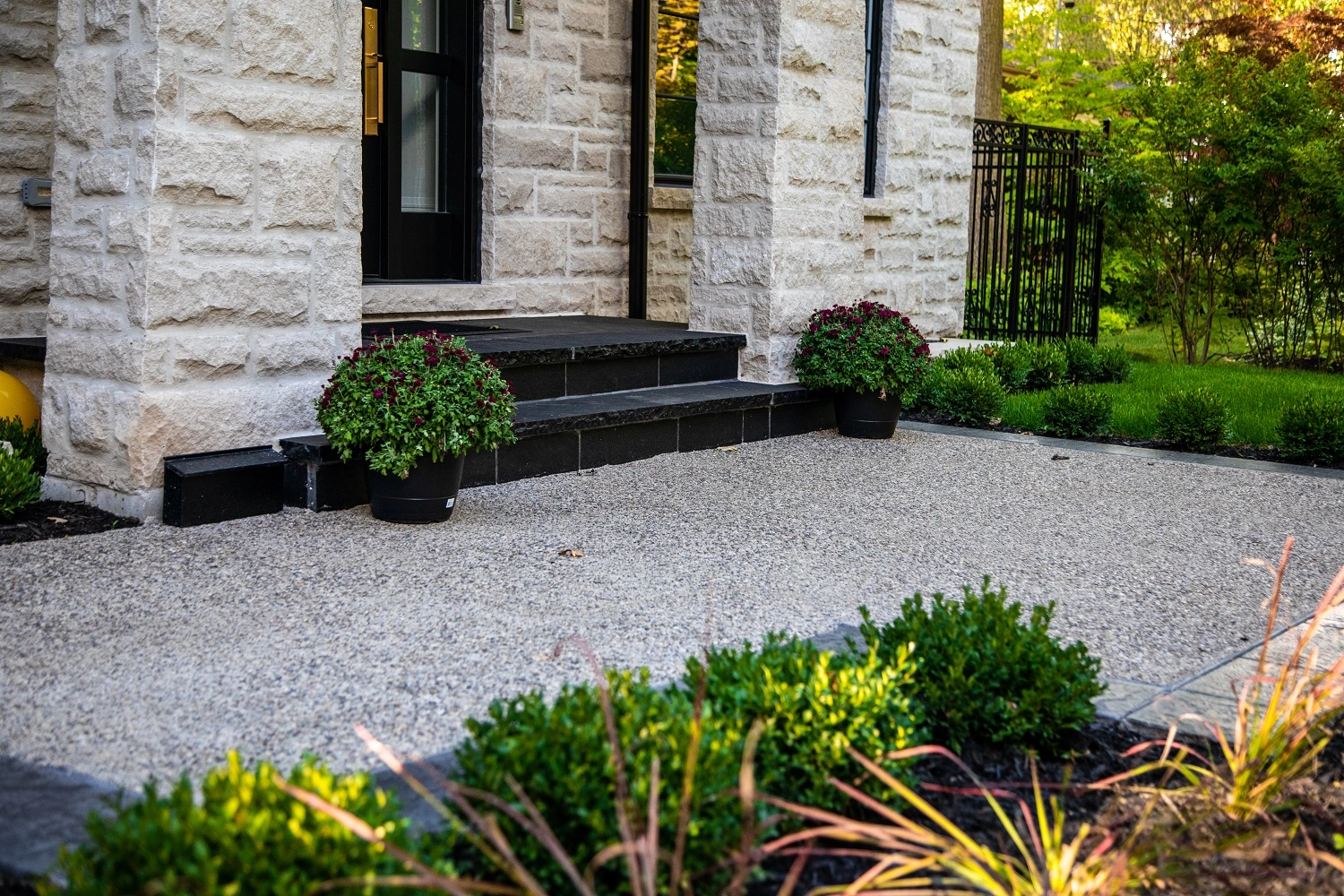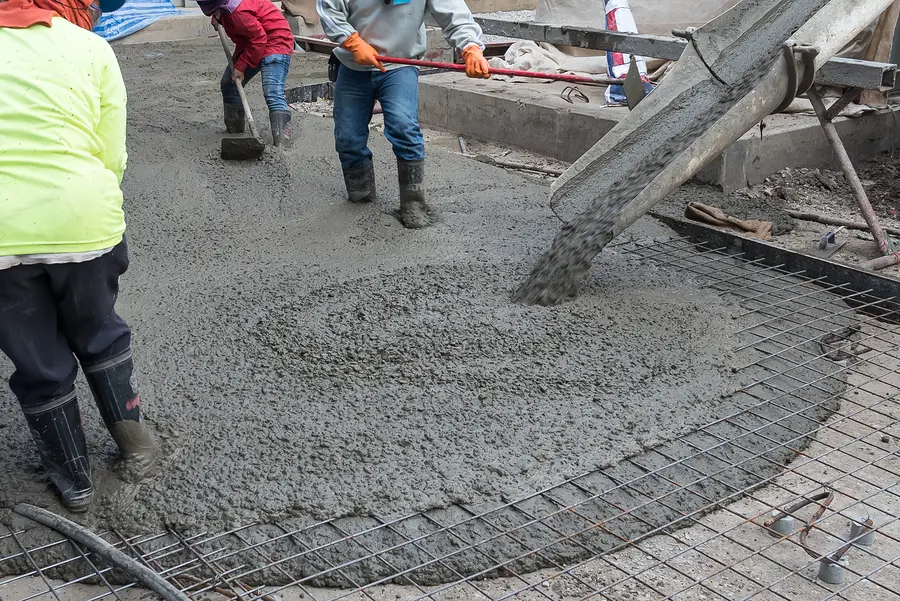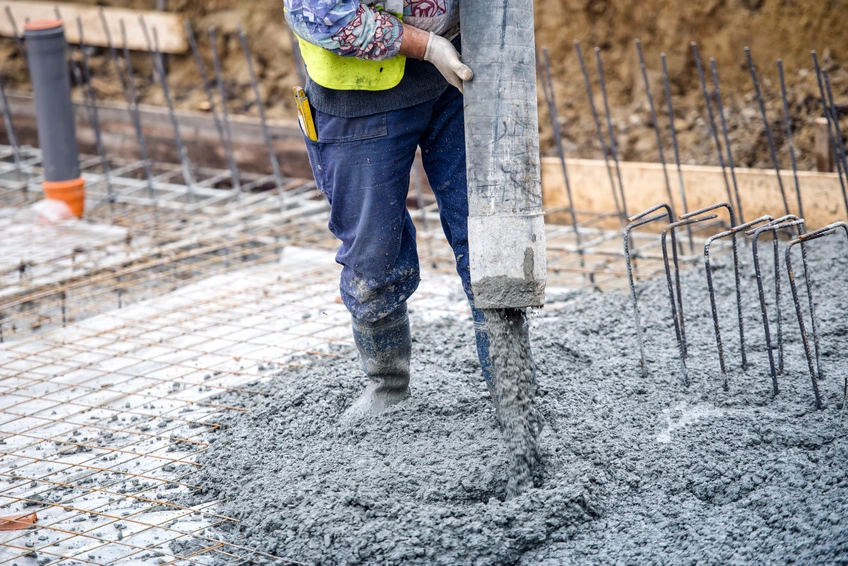Driveways and Patios: Creating Curb Appeal
Driveways and patios are crucial in enhancing a home's curb appeal. They are not just functional elements but also critical features that contribute to a property's overall aesthetic appeal and value. A well-designed driveway can offer an excellent first impression, increasing a home's appeal and charm.
In this article, we will examine the role of driveways and patios in increasing curb appeal and the different variables homeowners should consider when building or upgrading their driveways and patios to achieve the appearance and feel they want for their homes.

Topics covered in this article include:
1. Design: We will discuss various design options for driveways and patios, including materials, colors, patterns, and textures that can enhance a home's overall look.
2. Maintenance: We will offer tips on keeping driveways and patios in good condition and increasing a home's curb appeal.
3. Cost: We will look at the cost implications of several driveway and patio design options, allowing homeowners to make informed decisions depending on their budget and tastes.
4. Environmental impact: We will also touch upon the environmental impact of different driveway and patio materials, helping homeowners choose eco-friendly options that align with their values.
By the end of this essay, readers will have a better grasp of how driveways and patios may improve the curb appeal of their homes and the knowledge needed to make informed decisions when planning or remodeling these essential features.
Choosing the Right Materials
Selecting suitable materials is crucial when designing or renovating your driveway and patio. Several options are available, each with its advantages and considerations.
Types of Materials:
- Concrete: Durable and versatile, concrete is popular for driveways and patios. It can be tinted and embossed to resemble more expensive materials such as stone or bricks.
- Asphalt: Asphalt is cost-effective and easy to maintain, which is ideal for driveways. However, it may offer less design flexibility than other materials.
- Pavers: Pavers come in various shapes, sizes, and colors, allowing for intricate designs.
Considerations for Selecting the Best Material:
- Budget: Consider your budget and choose a material that fits it. While concrete and asphalt are cost-effective options, pavers can be more expensive.
- Climate: Consider your area's climate. Some materials may be more suitable for hot or cold temperatures, while others may be prone to damage in certain weather conditions.
- Maintenance: Consider what amount of maintenance you will commit to. Asphalt may require regular sealing, while concrete and pavers may need occasional cleaning and sealing.
By carefully examining these aspects, you can select the best material for your driveway and patio to improve your home's curb appeal while meeting your budget and lifestyle needs.
Design Considerations
Designing your driveway and patio requires careful consideration of various factors to ensure they complement your home's overall aesthetic and functionality.
Factors Influencing Design Choices
Size: Your driveway and patio should be proportionate to your home and yard. Consider the number of vehicles you need to accommodate and the space you want for outdoor activities.
- Shape: The shape of your driveway and patio can add visual interest to your landscape. Curved edges soften the look, while straight edges create a more modern feel.
- Style: Select a design that complements your home's architecture and aesthetic. Design possibilities suit any style, whether traditional, contemporary, or rustic.
Integrating Driveways and Patios with the Overall Landscape Design:
Materials: Select materials that harmonize with your home's exterior and other landscaping elements. For example, if you have a brick house, consider using brick pavers for your driveway or patio.
- Plantings: Incorporate plantings along the edges of your driveway and patio to soften the hardscape and add color and texture.
Install lighting in your driveway and patio to improve safety and create an inviting environment. Choose fixtures that complement your home's style and effectively illuminate critical areas.
By carefully considering these design factors, you can create a driveway and patio that enhances your home's curb appeal and integrates seamlessly with your overall landscape design.
Installation Process
Installing a driveway or patio is a complicated procedure that demands meticulous planning and execution to ensure longevity and attractiveness.
Steps Involved in Installing a Driveway or Patio:
1. Site Preparation: Ensure the space for the driveway or patio is clear of grass, rocks, and rubbish.
2. Excavation: The soil is excavated to the required depth to accommodate the base and paving material.
3. Base Installation: Crushed stone or gravel is distributed and compacted to form a strong foundation.
4. Edging Installation: Edging material is installed along the perimeter of the driveway or patio to define its shape and contain the paving material.
5. Paving Material Installation: The chosen paving material, such as concrete, asphalt, or pavers, is installed according to the desired pattern or layout.
6. Compaction: The paving material is compacted to ensure a level surface and proper pavers interlocking.
7. Joint Sand Application: For paver installations, joint sand is swept into the gaps between pavers to lock them in place.
8. Sealing (Optional): Depending on the paving material, a sealant can be applied to improve durability and attractiveness.
Importance of Proper Installation for Durability and Aesthetics:
Proper installation is essential for a driveway or patio's long-term durability and aesthetics. A well-installed driveway or patio will:
- Resist cracking and settling, ensuring a smooth and level surface.
- Drain water effectively, preventing pooling and erosion.
- Maintain its appearance over time, enhancing your home's curb appeal.
Following these instructions and ensuring correct installation will allow you to enjoy a beautiful, usable driveway or patio for many years.
Maintenance Tips
Maintaining your driveway and patio is essential to preserve their appearance and extend their lifespan. Here are some simple tips to keep them looking great for years to come:
Regular Cleaning:
- Regularly sweep your driveway and patio to remove leaves, dirt, and debris.
- Use a mild detergent and water to scrub away stains.
Sealing:
- Seal your driveway and patio every few years to protect them from stains, weather damage, and wear and tear.
- Choose a sealer that is compatible with the material of your driveway or patio.
Repairing Cracks and Damage:
Regularly inspect your driveway and patio for cracks and damage. Repair any cracks or holes as soon as possible to avoid further damage.
Use a concrete or asphalt patching compound for minor cracks. Consult a professional for larger cracks or holes.
Cost Considerations
When planning a driveway or patio installation, it's essential to consider factors influencing the overall cost. By understanding these factors and implementing budgeting tips, you can create curb appeal within your budget.
Factors Influencing Cost
1. Material Choice: The material you choose for your driveway or patio can significantly impact cost. Concrete and asphalt are generally more affordable, while pavers and natural stones can be more expensive.
2. Size and Complexity: The size and complexity of your driveway or patio will also affect the cost.
3. Site Preparedness: The site's condition might influence the installation cost of a driveway or patio. Extensive excavation or grading can add to the overall cost.
4. Labor Costs: Labor costs vary by geography and project complexity. Hiring experienced professionals will typically cost more but can ensure a quality installation.
Budgeting Tips:
1. Research and Compare Prices: Take the time to research different materials and installation costs.
2. Prioritize Needs vs. Wants: Determine what aspects of the project are essential and what features are nice to have but can be omitted or added later.
3. Consider Alternatives: Look for cost-effective alternatives to expensive materials. For example, consider stamped concrete instead of natural stone for a similar look at a lower cost.
4. Plan for Contingencies: Set aside a contingency fund to cover unforeseen expenses throughout the project.
You can design a beautiful driveway or patio using these characteristics and budgeting recommendations.
Frequently Asked Questions ( FAQs )
1. What is the average cost of establishing a new driveway or patio? The cost varies significantly according to the project's size, material, and complexity. Homeowners should expect to pay between $3,000 and $10,000 for a new driveway and $2,000 to $8,000 for a new patio.
2. How long does installing a new driveway or patio take?
The time it takes to install a new driveway or patio depends on several factors, including the project's size, intricacy, and weather. The installation process can average from a few days to a few weeks.
3. What is the best material for a driveway or patio?
Various considerations, including price, aesthetic choices, and care requirements, determine the appropriate material for a driveway or patio. Common materials include concrete, asphalt, pavers, and natural stone. Each material has advantages and disadvantages, so choosing one that meets your needs is essential.
4. How can I maintain my driveway or patio to ensure longevity?
To keep your driveway or patio looking good, clean and seal it regularly to preserve it from stains, weather damage, and wear and strain. Repairing any cracks or damage promptly can also help extend its lifespan. Keeping weeds and grass from growing in the cracks can also prevent further damage.
5. Are there any eco-friendly options for driveways and patios?
Yes, there are several eco-friendly options for driveways and patios, including permeable pavers. These pavers allow water to drain through the surface, reducing runoff and helping to replenish groundwater. Additionally, using recycled materials such as crushed concrete or reclaimed bricks can help reduce the environmental impact of your project.
Conclusion
In conclusion, enhancing your home's curb appeal with a well-designed driveway and patio can significantly improve its overall look and feel.
Ready to transform your outdoor space? Contact us today for a consultation, and let our experts help you design your home's perfect driveway and patio.




